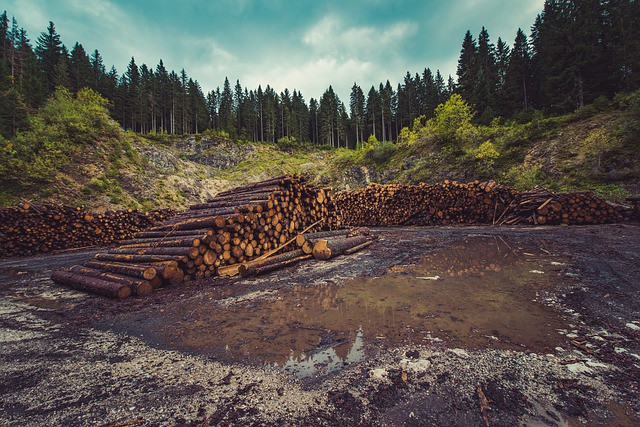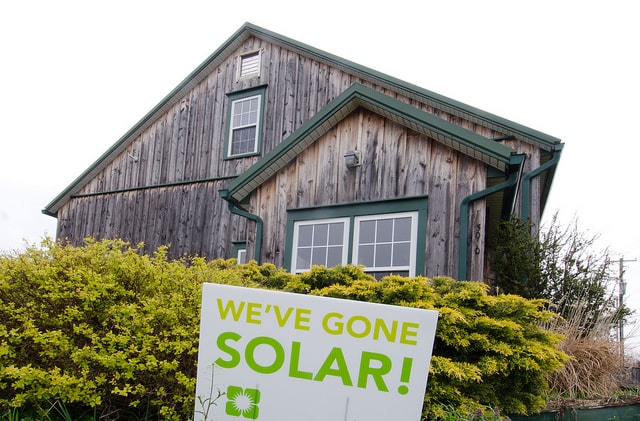8 Fantastic Solutions to Deforestation

Trees play a vital role in protecting our environment in several ways. Fewer forests mean that the sustainability of our planet earth is endangered. So far, there are actions and measures that are being undertaken to curtail deforestation, a move towards saving our natural environment and repairing the damage that has been caused for more than a century. The quickest solution would be to just stop the cutting down of trees. Nonetheless, a more workable solution is use of proper forest management strategies to ensure the environment is not disturbed.
Some of the fantastic solutions to deforestation include:
1. Green Business
Green business concerns re-use and recycling. Green methods of production and utilization of resources can immeasurably reduce deforestation. Particularly, it’s the focus on re-using items, reducing the use of artificial items, and recycling more items. Paper, plastics, and wood are linked to the destruction of forests and other natural resources.
By focusing on recycling paper, plastics, and wood products as well as adopting responsible consumerism, it means there will be less dependence on the natural resources and trees. It will also reduce government and company imports of raw-materials from forest regions in other parts of the world.
2. Eco-forestry
Eco-forestry is a move on saving the worlds forest. It acknowledges that sometimes, the use of trees for various human activities or reasons can be inevitable. Per se, eco-forestry underscores the need of cutting down trees in an environmentally friendly manner. It is where only cautiously selected trees are fell and transported with the least possible damage to the area. Also, eco-forestry not only calls for the preservation of the forest regions ecosystem but also allows for controlled and green timber extraction.
3. Law and Regulations
Due to the nature and extent of forest destruction, efforts to stop the human activities can be complemented by laws and regulation at governmental and organizational levels. As much as people increasingly become aware of deforestation consequences, some people focus more on the immediate economic gains at the expense of the long-term environmental damage.
This attitude has encourages illegal logging for timber and other valuable resources like rubber and palm oil. Therefore, stopping deforestation and preserving the natural vegetations demands rules, laws, and regulations from organizations and governments to aid in enforcing forest preservation policies. Laws on timber, wood fuel, farming, and land use among other forest resources must be advanced and enforced to limit deforestation.
4. Community Forestry
Community forestry is whereby local communities together with their local government and other local organizations such as schools, corporate, and universities join hands to start localized tree planting programs and management of their local forests. On various occasions such as public holidays, opening ceremonies, environment days, or other periodic localized activities, concerned local citizens can create awareness and plant trees.
This can be done within the surrounding areas as a method of boosting environmental sustainability and keeping the local forests viable. All local learning institutions, hospitals, local government headquarters, and the rest of the community can ensure trees are planted and the local forests are protected against damage as a way of finding solutions to the deforestation menace.
5. Replanting (Reforestation)
Replanting or tree planting utilizes almost the same aspect as community forestry. However, it entirely focuses of replanting, a feature commonly known as reforestation. Reforestation is the restoration or replanting of forests that have been reduced by fire or felling. It requires an ongoing process and should not be viewed as a onetime thing.
People, communities, governments, and organizations are all active actors. It involves selecting and dedicating large tracts of land mainly for the purpose of cultivating forests. For instance, in local communities and urban centers, it can be done around market areas, in game/wildlife reserves, or within city parks. Replanting, therefore, qualifies restorative measure of deforestation.
6. Sensitization and Educative Campaigns
Deforestation can also be counteracted through awareness and sensitization. Sensitization and educative campaigns can be a simple but a more workable solution. Initiating awareness creation champagnes makes it easy for people to detect the causes, effects, and ways of counteracting deforestation. Personal experiences from adversely affected communities such as farmers can be used to emphasize the negative effects of deforestation.
Thus, making conscious efforts to share information with people including family, friends, colleagues, and the entire community on deforestation and its effects is an appropriate measure of standing up in unison to combat the clearing of forests.
7. Joint Organizations
Conservation, wildlife, rainforest, and nature protection agencies among other environmental programs can join together with a common goal of preserving, restoring, and protecting forests to ensure permanence of the world’s natural resources. When such big organizations work together, it makes it easier to install the proper forest management mechanisms. Far-reaching impact can likewise be realized if environmental conservation and protection organizations work together.
8. Land Use Planning
Cities and urban centers continue to grow day after day as more and more people claim their share of living in cities and the urban areas. Agricultural practices also continue to expand as farmers and consumer demands call for better productivity and quality food products respectively. As a result, the urban sprawl and agricultural expansion have kept on clearing forests to create more room for their respective activities.
In response to this threat, creation of proper land use planning techniques can offer the fastest and the most feasible solution to deforestation. Land use planning that centers on environmentally friendly development techniques like urban agriculture and lessening urban and suburban sprawl can considerably cut back deforestation.






